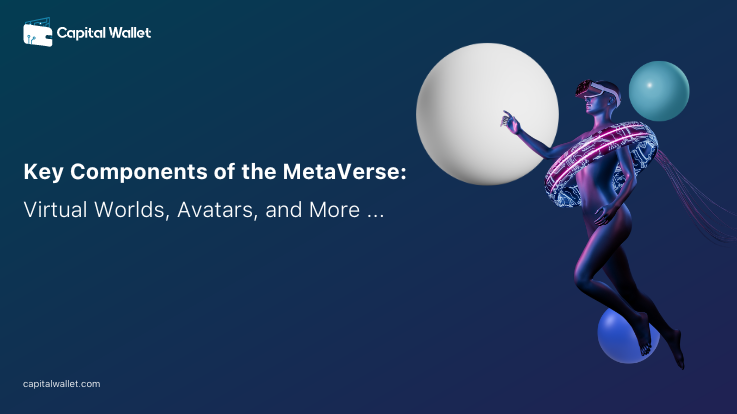
The MetaVerse is a vast and ever-evolving digital landscape, a place where the boundaries between the virtual and the real world blur, and the possibilities are endless. But what exactly makes up this virtual world? In this article, we will explore the key components that constitute the MetaVerse, and how they work together to create an immersive and interactive experience for users.
First and foremost, Virtual reality and Augmented reality technology form the foundation of the MetaVerse. This technology enables users to fully immerse themselves in a computer-generated environment, creating the illusion of being in a different place. It allows users to interact with the virtual environment, to see and hear things that would not be possible in the real world.
Another key component of the MetaVerse is Avatars. Avatars are digital representations of users, and they are how users interact with the virtual environment and other users. The user can customize them to reflect their personality, style, and interests. Avatars allow users to express themselves in the MetaVerse, to make new friends and to participate in virtual events.
Social interaction is another important element of the MetaVerse. In this virtual world, users can interact with each other in real-time, regardless of their physical location. They can chat, play games, and participate in virtual events, creating a sense of community and connection.
Within the MetaVerse, a virtual economy exists, providing users the ability to purchase and sell virtual goods and services using virtual currency. This enables the creation of virtual marketplaces and economies within the MetaVerse. It also allows for the creation of virtual real estate and virtual items, which users can own and control.
Web 3.0 technologies, which enable decentralized applications and services, are also used to build the MetaVerse, creating a decentralized and user-controlled web. This allows for a secure and transparent platform for the MetaVerse, enabling users to have control over their own data and identities.
In addition to this, the MetaVerse also requires high-speed networks and edge computing, artificial intelligence and machine learning, blockchain technology and cloud computing to provide a seamless and immersive experience for the users.
In conclusion, the Metaverse is made up of many different key components, working together to create a virtual world that is both immersive and interactive. From virtual reality and avatars, to social interaction and virtual economies, the MetaVerse is a constantly evolving digital landscape that has the potential to revolutionize the way we interact, learn, and do business

